I’m sure that everyone’s heard this question, “When we are flying, can a small hole in the airplane cause it to burst?” I know I have from new crew members in training as well as civilian passengers when I’m flying commercially. Its actually a very astute question but its based on the assumption that an airplane is a sealed metal can (a Coke can makes a great comparison).
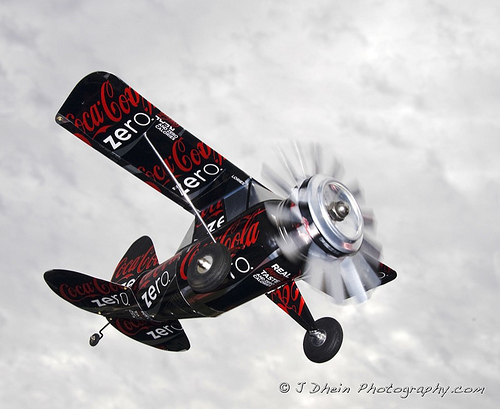 This is definitely not a 737 |
 Neither is this can of Coke |
The thing to understand about an airplane like a 737 is that it is nothing like a sealed coke can but in fact has holes in the vessel on purpose that work with an aircraft’s Cabin Pressure Control System (CPCS) to regulate the pressure.
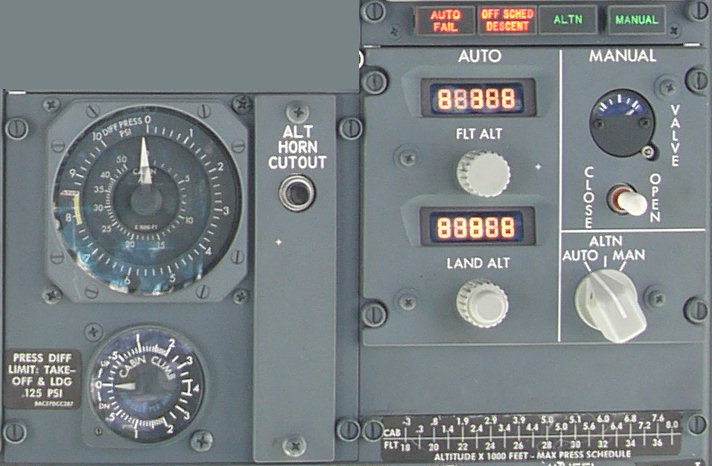
Cabin Pressure Control System (CPCS)
The CPCS is what regulates the air pressure for the vessel. This is accomplished using bleed air from the aircraft engines, mixed into an air pressure pump (called an air pack) which pumps air into the cabin and regulates the air temperature. Air that is pumped into the vessel has to be let out so the Main Outflow Valve is placed in variable positions based on the altitude of the aircraft. The valve can be controlled automatically by one of two pressure controllers, or if both fail, it can be controlled manually using the switch. This system is what allows the inside altitude of an airplane to be maintained a comfortable setting of 8,000 feet when the true altitude outside of the aircraft is 41,000 feet.
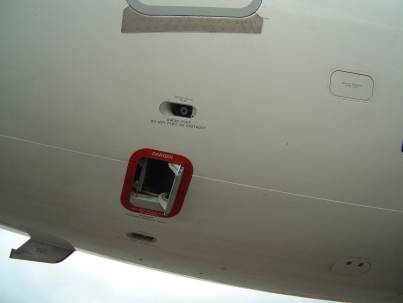
Pressure Valves on a 737-700
Here’s a close up of the Main Outflow Valve. It sure does look menacing but the ‘teeth’ are a recent redesign to smooth out the flow of the air and reduce the noise created as it adjusts in flight. But since putting your hand inside that opening is a good way to lose it, perhaps the design has a nice secondary preventative purpose as well.
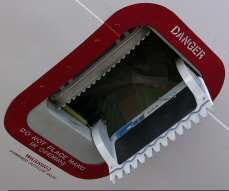
Main Outflow Valve
Ok so now that you understand what the valve ‘that looks like a piranha’ does…I’m sure you’re asking “What happens if that thing gets stuck?!” Another good question that the engineers thought enough to design a solution for. Let’s go back to look at our trusty Diet Coke Can.
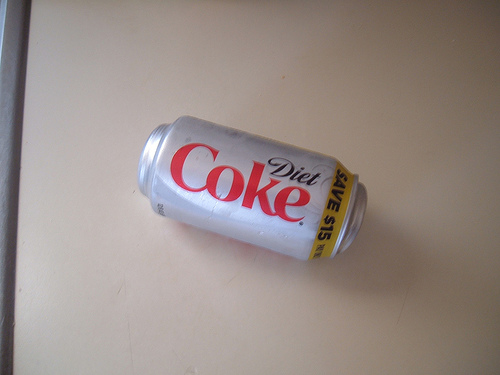
Positive Pressure on a Diet Coke Can
When you put a Coke can in the freezer and the contents freeze, it causes the can to bulge and expand. That’s not good for the can because obviously later after the coke thaws out, it won’t sit normally on the bottom and the can’s seals probably leak. Well the air pressure on the inside of an aircraft could do the same thing as well if there wasn’t a valve in place to relieve the pressure. That’s what the two Positive Pressure Relief Valves are for. They are located on both sides of the Main Outflow Valve and are engaged with the cabin pressure differential is is around 8.95PSI. It keeps the same thing that happened to the Diet Coke can from happening to the aircraft (and from causing some major trauma to the passengers and crew).

Positive Relief Valve
So on climb out the aircraft is not pressurizing right and the Main Outflow Valve gets stuck…what would keep it from crushing like the can below?
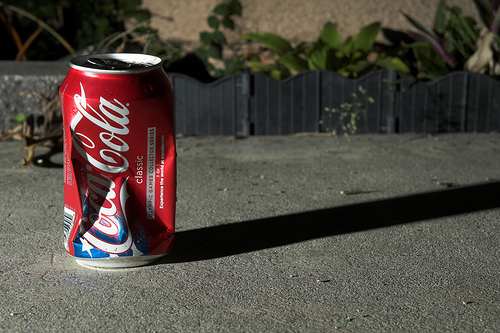
Negative Pressure on a Coke can
Yup, the engineers thankfully thought of that as well. In order to protect the aircraft from under pressuring (which can damage it as well), the aircraft has a Negative Pressure Relief Valve.
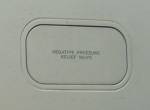
Negative Pressure Relief Valve
The spring loaded door is held in place but with a small amount of negative pressure in the cabin, it is ‘sucked’ back to allow the pressure to equalize.
So obviously aircraft aren’t solid metal sealed cylinders like a Coke can (and thank goodness). If a door seal isn’t tight or whatever, the aircraft has the ability to maintain its pressure throughout the duration of the flight. The system is redundant and very safe. Most commercial aircraft have systems very similar to this one that function in the much same manner.
Have any other mechanical questions about the 737/C-40A? Ask away! Feel free to Tweet, email or comment with your questions and perhaps I’ll write about it in a future blog entry.
